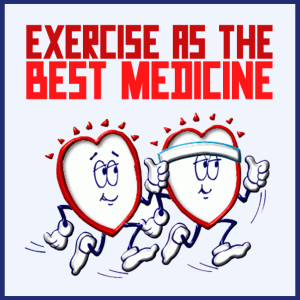Good sleep goes hand in hand with good health; after all, one-third of the day is spent in the state of non-wakefulness know as sleep. Whether this sleep is a peaceful slumber or ridden with multiple awakenings has great consequences for productivity, learning, attention and demeanor throughout the day. Thus, it is essential to maintain adequate sleep hygiene, and exercise can play a role in increasing restorative sleep — if done at the right time.
What are the stages of sleep?
Sleep is divided into stages 1 through 4, as well as rapid eye movement (REM) phases, which alternate throughout the night. Stage 1 sleep occurs early in the night, and during this phase people are easily aroused by sounds, movement or other disturbances. This is followed by stage 2, the predominant sleep phase. Electroencephalograms (EEGs), devices used to measure brainwave activity, show high frequency activity during the first two sleep stages. In contrast, stages 3 and 4 are deep sleep stages characterized by high amplitude slow waves on the EEG. During these deep sleep stages, people sleep soundly and are not easily arousable. Perhaps the best known phase of sleep is REM sleep, during which it is believed that memories are consolidated. During REM, the body is paralyzed with the exception of the eyes, which rapidly flutter. Throughout the night, REM sleep typically increases in duration.
What are some common sleep disorders?
Insomnia is an inability to sleep. This condition can be extremely distressing to the patient, reducing cognitive capacity during the day, and increasing stress hormones such as cortisol and catecholamines.
Restless Leg Syndrome (RLS) manifests as an intense desire to move one’s legs when trying to fall asleep. It can be extremely disturbing and can delay sleep onset. It affects 2 to 5 percent of the population and is more prevalent in the middle-aged.
Night terrors affect children and cause them to wake up screaming or paralyzed with fear. The next morning, they never remember waking up. Night terrors occur during slow wave sleep and typically resolve with age.
Narcolepsy is when patients suddenly fall asleep during the day. They typically experience REM earlier in their sleep cycle and experience hallucinations when waking (hypnopompic) or when going to bed (hypnogogic). Narcolepsy has been associated with decreased levels of orexin, the neurotransmitter that regulates arousal and appetite. It is usually diagnosed with a multiple sleep latency test, in which patients are allowed to nap several times in a day. Decreased latency, or time until sleep, is associated with increased daytime sleepiness in this condition.
How does exercise influence sleep?
In addition to traditional pharmacotherapy, exercise has been utilized as therapy for sleep disorders. Aerobic exercise has been shown to improve self-reported sleep and quality of life in older adults with insomnia. A meta-analysis of studies examining the acute and chronic effects of exercise on sleep concluded that exercise increases slow wave sleep and total sleep duration, and decreases sleep onset latency and REM sleep. The theory behind these changes is that exercise causes daytime physical strain, increasing the need for the restorative deep sleep stages at night. Studies have verified that exercise increases levels of cytokines, pro-inflammatory small proteins involved in cell signaling, which results in increased non-REM sleep.
Exercise has not proven to be of benefit to patients with narcolepsy, but play has! Narcoleptic patients who engaged in yard play had increased orexin levels, while those who underwent a treadmill test did not. The authors concluded that an emotional rather than physical response was needed to increase orexin levels.
The benefits of exercise come with one caveat: exercise should not be done in the hours immediately before bedtime, or the previously mentioned “runner’s high” may interfere with falling asleep. But morning, afternoon, or early evening exercise routines may be just what you need to achieve a night of deep, restorative sleep.
Why is this important to medical students?
Medical students have poorer sleep quality compared to their age-matched peers, which has profound implications for medical school academic performance as well as patient care. This trend continues through medical training and practice, with physicians and trainees reporting decreased sleep duration. Thus, medical students can improve their own sleep hygiene by engaging in regular exercise, and they can advise their patients to do the same.
The further I progress in my medical training, the more passionately I believe that exercise is the best preventive medicine. In this column, I share research regarding exercise as medicine, ways medical students can incorporate exercise into their daily routines, poetry on positive exercise experiences, and highlights on how doctors in the community are using exercise as a means to treat their patients.




